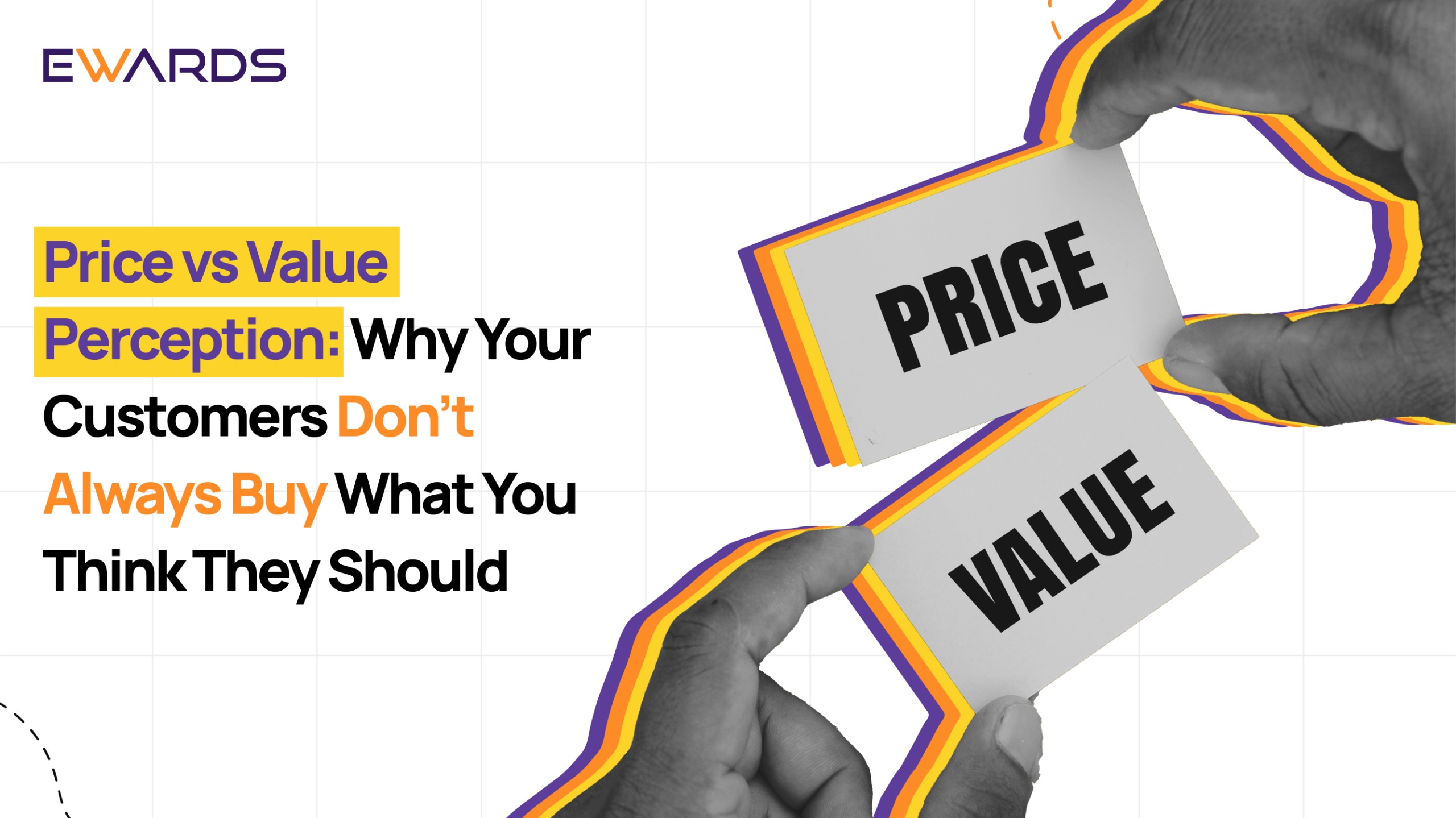
Have you ever wondered why some customers are willing to pay a premium for a product, while others hesitate to buy something even at a discounted price? You’re not alone. The relationship between price and value perception is more complex than most businesses realize.
The truth is, consumers don’t always act rationally when it comes to price. According to a Statista report, 40 percent of Indian consumers stated that value for price was very important, not the actual price tag. The problem? Most businesses think slashing prices will drive sales, but the key to long-term success lies in how customers perceive the value of what they’re buying, not just the price they’re paying.
Let’s break it down: Why is the price vs value perception so crucial, and how can it transform your CRM strategy to drive repeat business and customer loyalty?
Price Vs. Value Perception: Understanding the Core Concept
Price Perception
Price perception refers to how your customers interpret the cost of a product or service. It’s essentially the “sticker price,” or the amount of money a customer sees as the transaction cost.
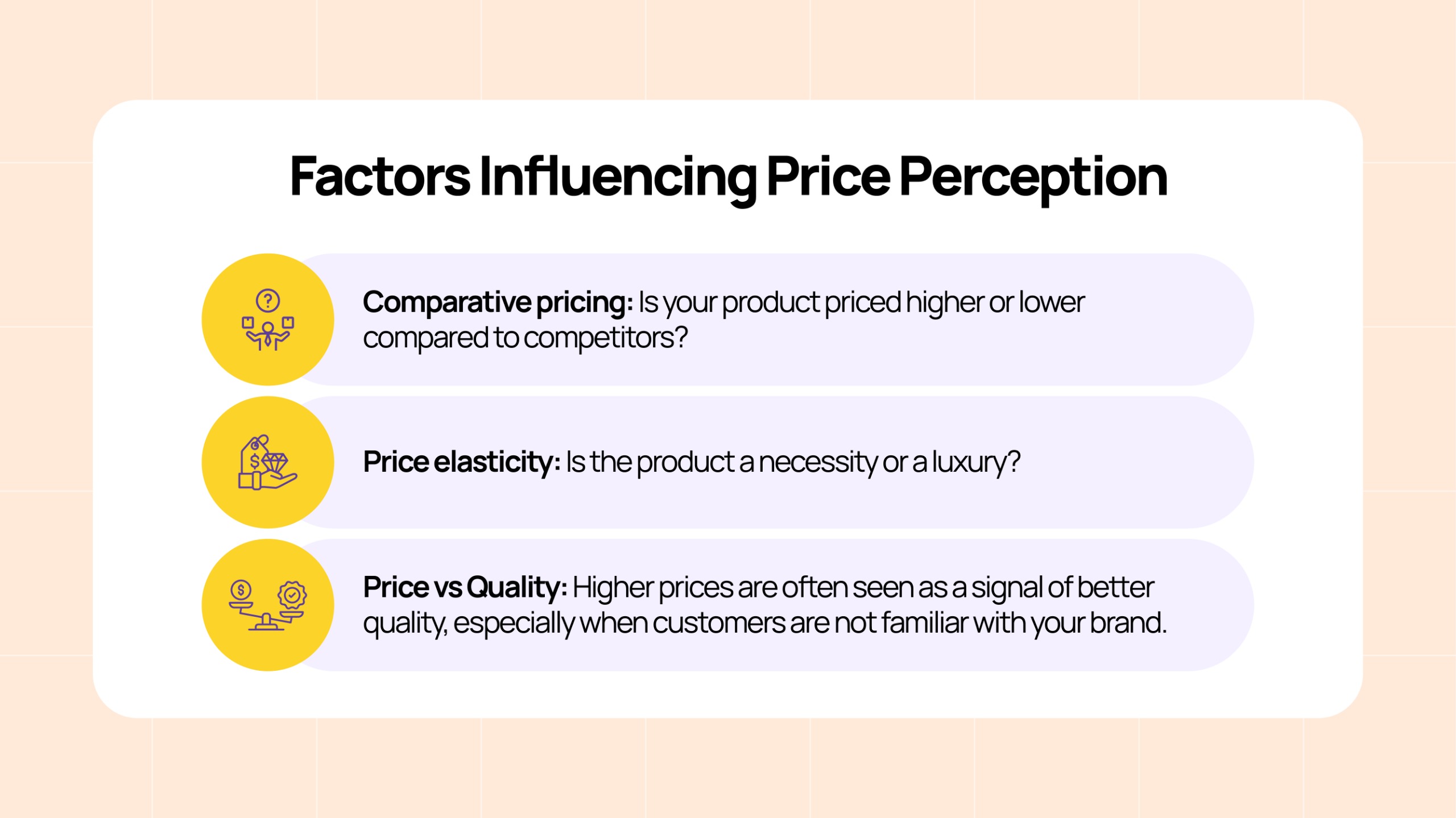
A study by DPS Verma and Soma Sen Gupta revealed that customers associate a high price with better quality. This connection can work to your benefit if you position your products in the right way.
Value Perception
Value perception, on the other hand, is how customers perceive the worth of your product or service about its cost. It’s subjective and emotional. Value is driven by personal experiences, emotional connections, and individual preferences rather than the sheer cost.
For example, while a luxury handbag might be priced significantly higher than a standard one, its perceived value is influenced by factors such as status, quality, and brand reputation, not just the cost of the materials. Similarly, a product that is viewed as a necessary solution to a problem may carry a higher perceived value, even if the actual price is lower.
The Role of Behavioral Economics in Pricing and Value Perception
Behavioral economics is the study of psychological, social, and emotional factors that affect economic decisions. When it comes to pricing, several behavioral biases can influence how customers perceive your products. Understanding these biases can help you price your product effectively without compromising value.
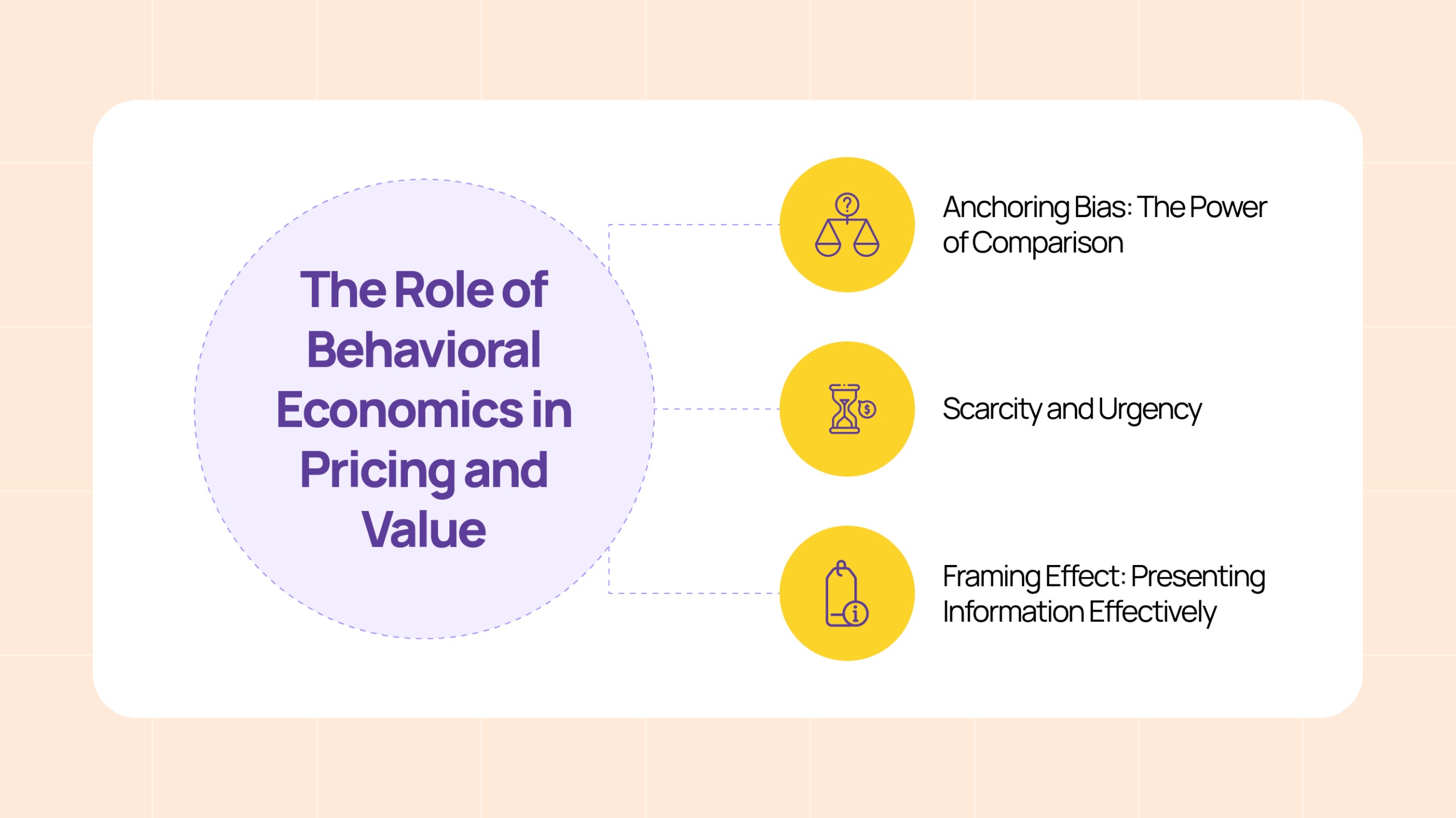
- Anchoring Bias: The Power of Comparison
One of the most common behavioral economics principles is anchoring bias. This refers to the tendency for customers to rely heavily on the first piece of information they encounter (the “anchor”) when making decisions.
For example, if you display a high-priced product next to a moderately-priced option, customers are more likely to perceive the moderately-priced item as a better deal, even if it’s still expensive.
How it works:
- Anchor the price high: Place a premium-priced product next to a standard product to make it seem more affordable by comparison.
- Scarcity and Urgency
Scarcity influences value perception because people tend to place a higher value on items they perceive to be rare or hard to get. This is why limited-time offers or limited-stock products can have a significant impact on how customers view the product’s value.
Example:
- “Hurry, only 5 Left!” triggers urgency, making the product appear more valuable.
- Framing Effect: Presenting Information Effectively
The framing effect suggests that people make decisions based on how information is presented to them. The way you present your product’s price can heavily influence how customers perceive its value. For example:
- Presenting a $100 price as “only $2.75 a day” can make the same price feel much more affordable to customers.
Why Price Vs. Value Perception Matters For Your CRM Strategy?
Understanding how customers perceive price vs value can completely transform your CRM strategy. Here’s why:
- Personalization
To truly create value, you need to personalize the experience. Studies suggest 80% of consumers are more likely to buy from brands that offer a personalized experience, and that is expected to rise to 85% by 2025 with advanced and accessible tools. The right CRM strategy will allow you to segment your customers based on their value perception, preferences, and previous purchases.
For example, a customer who believes they’re receiving high value from a product may be willing to pay a little extra. A personalized experience that addresses their unique preferences will increase their perception of the value they’re receiving, making them more likely to return.
- Role of Price Perception in Segmentation
You can use CRM data to understand how customers perceive your prices. Are your customers seeing your product as a luxury purchase or as an affordable necessity? By segmenting your customers based on price perception, you can deliver targeted messages and offers that speak to their psychological triggers.
For instance, a customer who sees your product as a luxury might respond better to exclusive, VIP-level offers, while a budget-conscious customer might appreciate discounts or bundle deals.
How to Use Offers & Discounts to Enhance Value Perception (Without Losing Profit)
Discounts and offers can be effective in driving customer purchases, but they need to be strategically applied to ensure that value perception isn’t undermined. The goal is to enhance the perceived value without eroding profits.
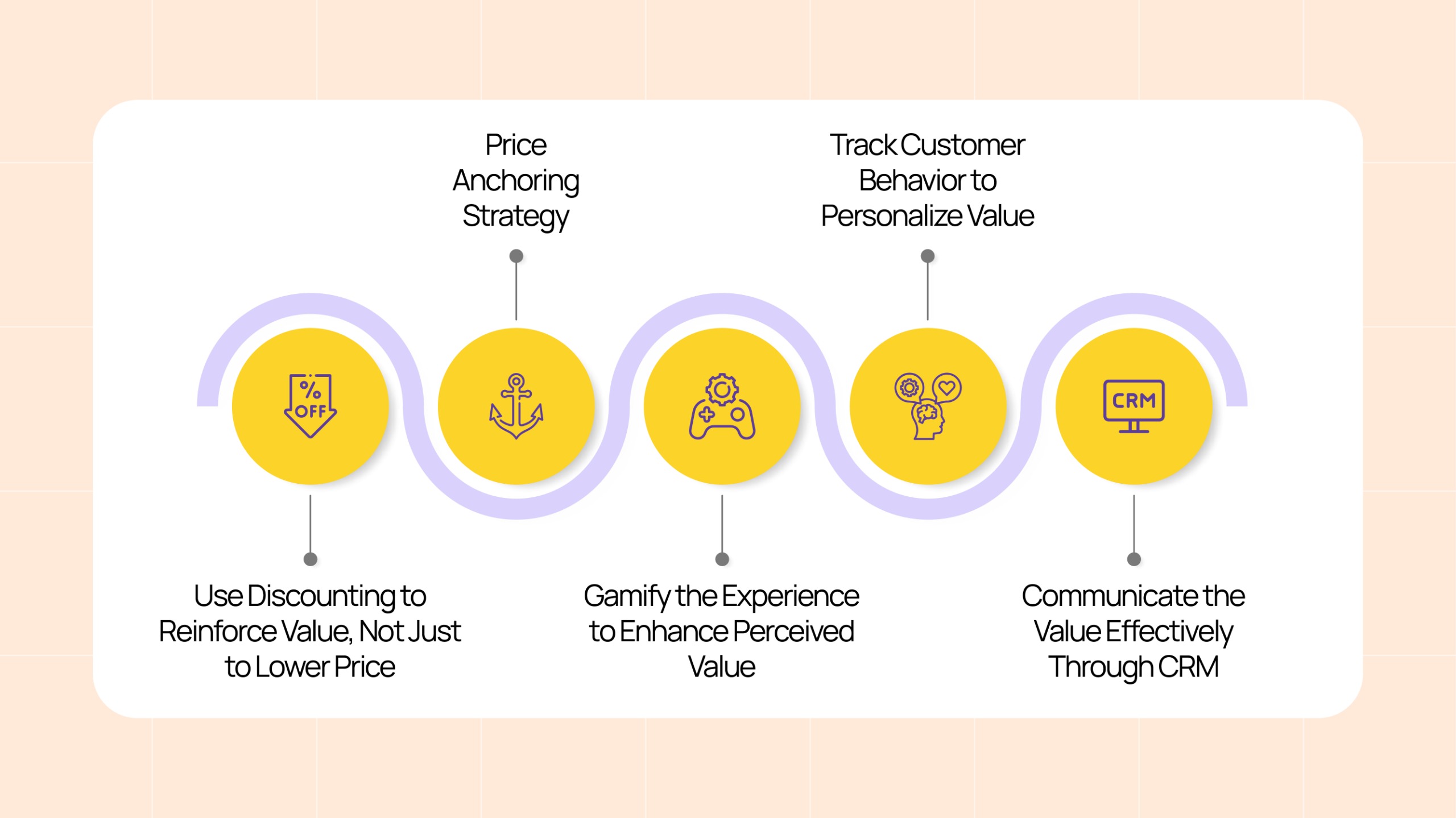
- Use Discounting to Reinforce Value, Not Just to Lower Price
Strategic discounts should focus on reinforcing the value of your product. This can be done by offering discounts in ways that emphasize quality and the brand’s reputation rather than solely focusing on price reduction.
For example:
- Offer a loyalty discount for repeat buyers to reward ongoing patronage rather than slashing prices on first-time purchases.
- Bundling products with an attractive price can enhance perceived value, as customers feel they are getting more for their money.
- Price Anchoring Strategy
Another way to boost value perception without sacrificing profit is to use a premium pricing strategy with a discount anchor. For example:
- If you have a luxury item priced at $300, consider offering a “Buy One, Get One 50% Off” deal.
- This strategy encourages customers to buy the higher-priced item, while the discount makes them feel they’re getting more value.
- Gamify the Experience to Enhance Perceived Value
Adding a gamified element to offers can increase engagement and make customers feel they are receiving exclusive value:
- Spin the wheel for a chance to win 20-50% off: This creates excitement and enhances the feeling of getting a good deal while maintaining the product’s perceived quality.
- Track Customer Behavior to Personalize Value
CRM tools allow you to track customer behavior. By monitoring the frequency of purchases, spending patterns, and product preferences, you can tailor your offers to match their value perception.
For example:
- If a customer frequently buys budget-friendly items, offer them more affordable options or discounts.
- If a customer regularly purchases premium items, offer VIP rewards or exclusive products.
- Communicate the Value Effectively Through CRM
Sometimes, customers need to be reminded of the value they’re receiving, especially if they’re sensitive to price. CRM systems can help you send personalized messages that reinforce your product’s value.
For example:
- Reminder emails for abandoned carts that highlight product benefits
- Follow-up messages with additional information on product features
- Loyalty program offers that enhance perceived value by rewarding customers for engagement
Balancing Price and Value Perception
So, how do you strike the perfect balance between price and value? It’s about positioning and strategy.
High-Price, High-Value Perception: Make your product feel premium and exclusive, and charge accordingly.
Low-Price, High-Value Perception: Offer discounts, but make sure the product is seen as a great deal that delivers excellent quality.
Apple’s Value Perception
Apple doesn’t just sell a product; they sell an experience. The premium price tag on an iPhone, for instance, isn’t just a reflection of hardware—it’s an emotional and psychological experience. Behavioral economics helps explain why consumers are willing to pay more for Apple products than for other comparable options in the market. Let’s break it down:
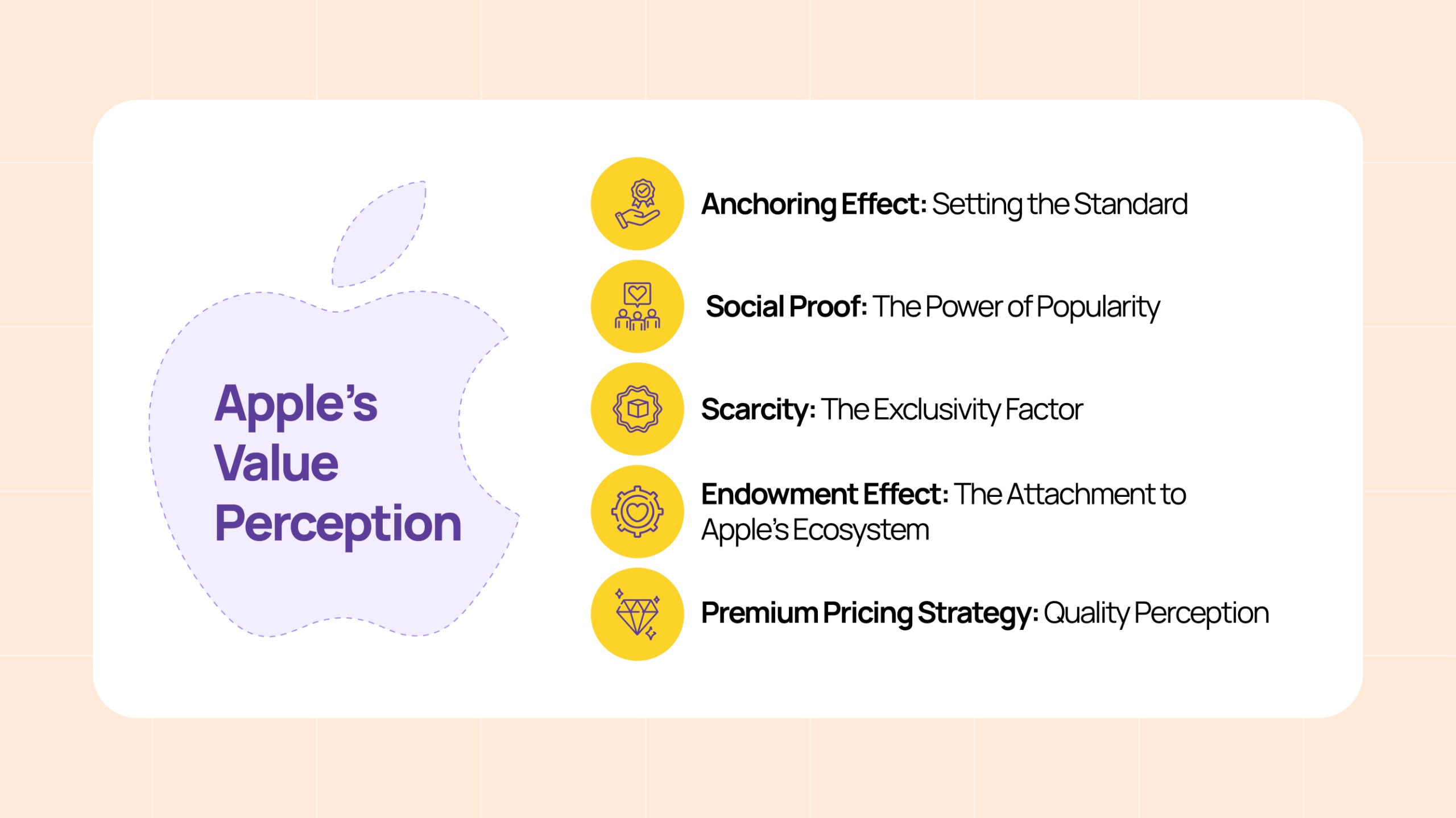
1. Anchoring Effect: Setting the Standard
Apple prices its products higher to create a perception of quality. The high price tag anchors customers’ expectations, making them associate the brand with luxury and exclusivity. Even if other brands offer similar features at lower prices, Apple’s premium price signals that it offers more value.
2. Social Proof: The Power of Popularity
The more people use Apple products, the more they become a social norm. Celebrities, influencers, and everyday users contribute to its perceived value. It’s not just a phone—it’s a status symbol, which drives demand and strengthens the brand’s value in consumers’ eyes.
3. Scarcity: The Exclusivity Factor
Apple uses the scarcity effect by creating limited editions and generating demand during new product launches. Limited availability makes their products seem more valuable. This exclusivity encourages consumers to buy quickly, reinforcing the perception of high status.
4. Endowment Effect: The Attachment to Apple’s Ecosystem
Once a customer buys one Apple product, they’re more likely to buy more due to the endowment effect. Apple’s ecosystem makes customers feel emotionally attached to their products, increasing brand loyalty and making them reluctant to switch.
5. Premium Pricing Strategy: Quality Perception
Apple doesn’t compete on price—it competes on perceived value. Higher prices signal better quality and a premium experience. Consumers are willing to pay more because they associate higher prices with luxury and innovation, even if the product features are similar to competitors.
Conclusion
In today’s market, it’s clear: value perception is the cornerstone of brand loyalty. You need to position your products in such a way that your customers feel an emotional connection, not just the price. When they perceive the value of what they’re buying to be greater than the cost, they’re more likely to buy again.
So ask yourself: How are you positioning your brand in the minds of your customers? Is it only about the lowest price, or are you offering something they can’t put a price on?